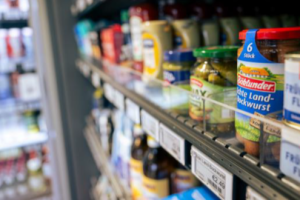Despite its touted convenience, barriers to entry persist, hindering growth in this sector. With a market worth a modest $375.4m in 2023, representing less than 0.01% of the global in-store retail market, questions arise about its scalability.
As challenges persist in adoption and investment, the trajectory of frictionless commerce remains uncertain, observes GlobalData.
While Amazon pioneered the approach with its Fresh and Go outlets, recent closures suggest a strategic pivot. This shift underscores evolving dynamics in the retail landscape and prompts reflection on the future direction of frictionless commerce.
GlobalData’s latest report, ‘Frictionless Commerce’, reveals that ease of entry is one of the biggest barriers to footfall in frictionless commerce.
It shows that many consumers are put off by requests to download an app to enter a store, and imperfect technology implementation can also cause delays and errors, alienating shoppers rather than providing convenience.
Aisha U-K Umaru, thematic intelligence analyst at GlobalData, said: “Consumers are hesitant to adopt frictionless commerce for understandable reasons.
“When you are in a rush, on your lunch break, or headed home, the last thing you want is to be stopped at the store entrance and told to download an app and input your payment details before you can enter.
“Introducing a new product or technology will always be difficult, and the market is pushing back against frictionless commerce. It may be innovative, but consumers have the final say and do not seem enormously supportive of this new retail concept.”
U-K Umaru continued: “While consumers’ response to frictionless commerce has been tepid, forecasted growth over the next few years shows some promise for the technology. Adoption may increase if retailers and solution providers iron out some of the issues around cost and ease of entry for shoppers.”
Another key barrier to frictionless commerce adoption is the high cost to retailers. Frictionless commerce stores are fitted with various cameras and sensors (including shelf sensors and sensors embedded into packaging) that track customers around the store, monitor which items they pick, and collate that data.
The high costs associated with fitting or building a frictionless commerce store with these technologies, coupled with uncertain returns, may also deter retailers from adopting.
U-K Umaru concluded: “Technology juggernaut Amazon has been able to harness its technical expertise to build frictionless commerce capabilities in-house. Its Just Walk Out technology has made it a leader in the frictionless commerce theme.
“Other retailers unable or unwilling to build in-house must look to third-party service providers such as Zippin or Trigo. While this creates a new market for store automation service providers, the cost to retailers is high.
“Cheaper sensors and more cost-effective automation services may pose some relief, and it will be interesting to see if this supports higher adoption.”
 Talking Retail Grocery and product news for independent retailers
Talking Retail Grocery and product news for independent retailers






